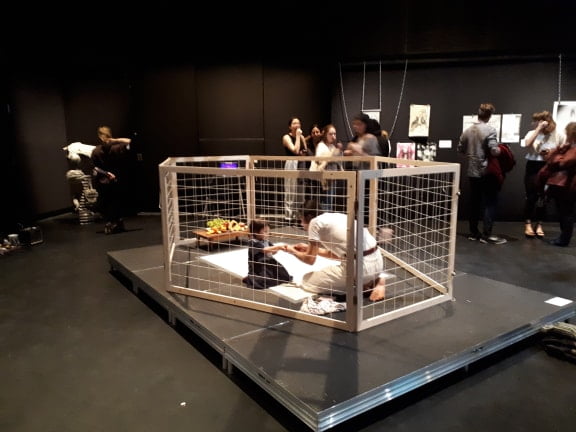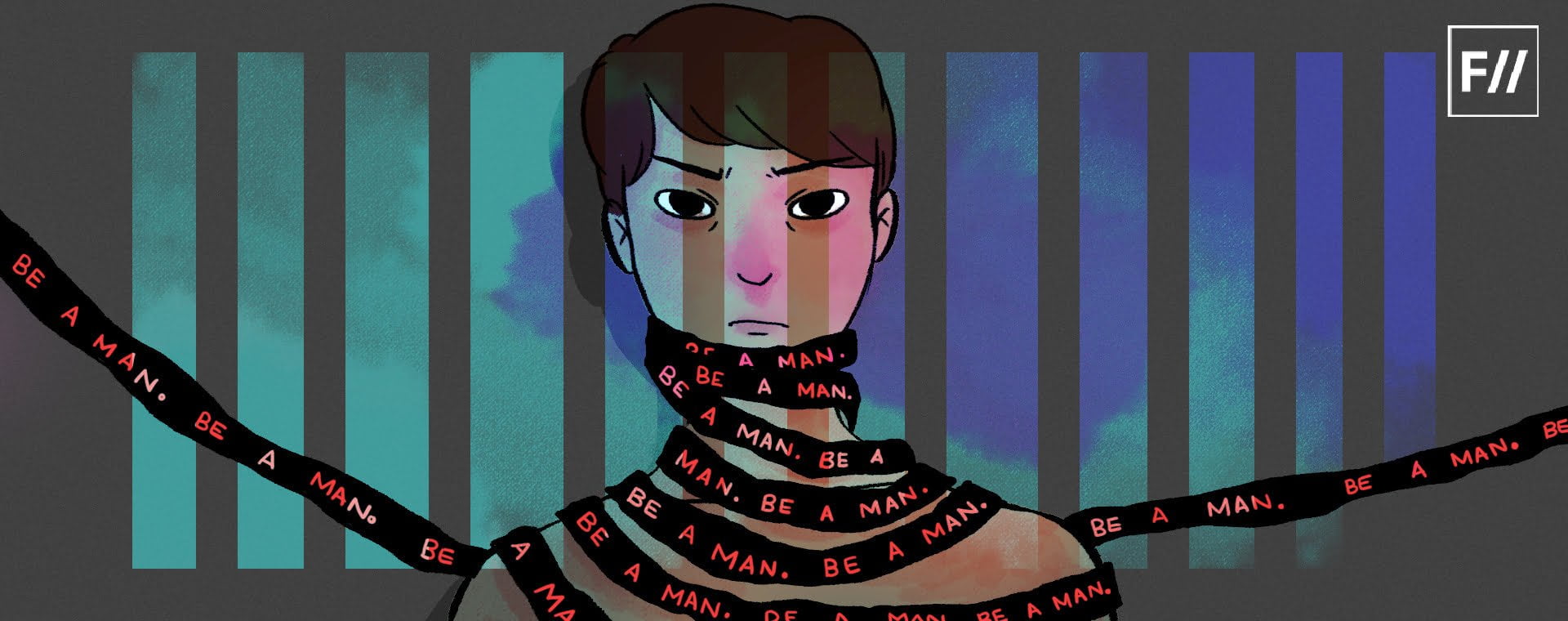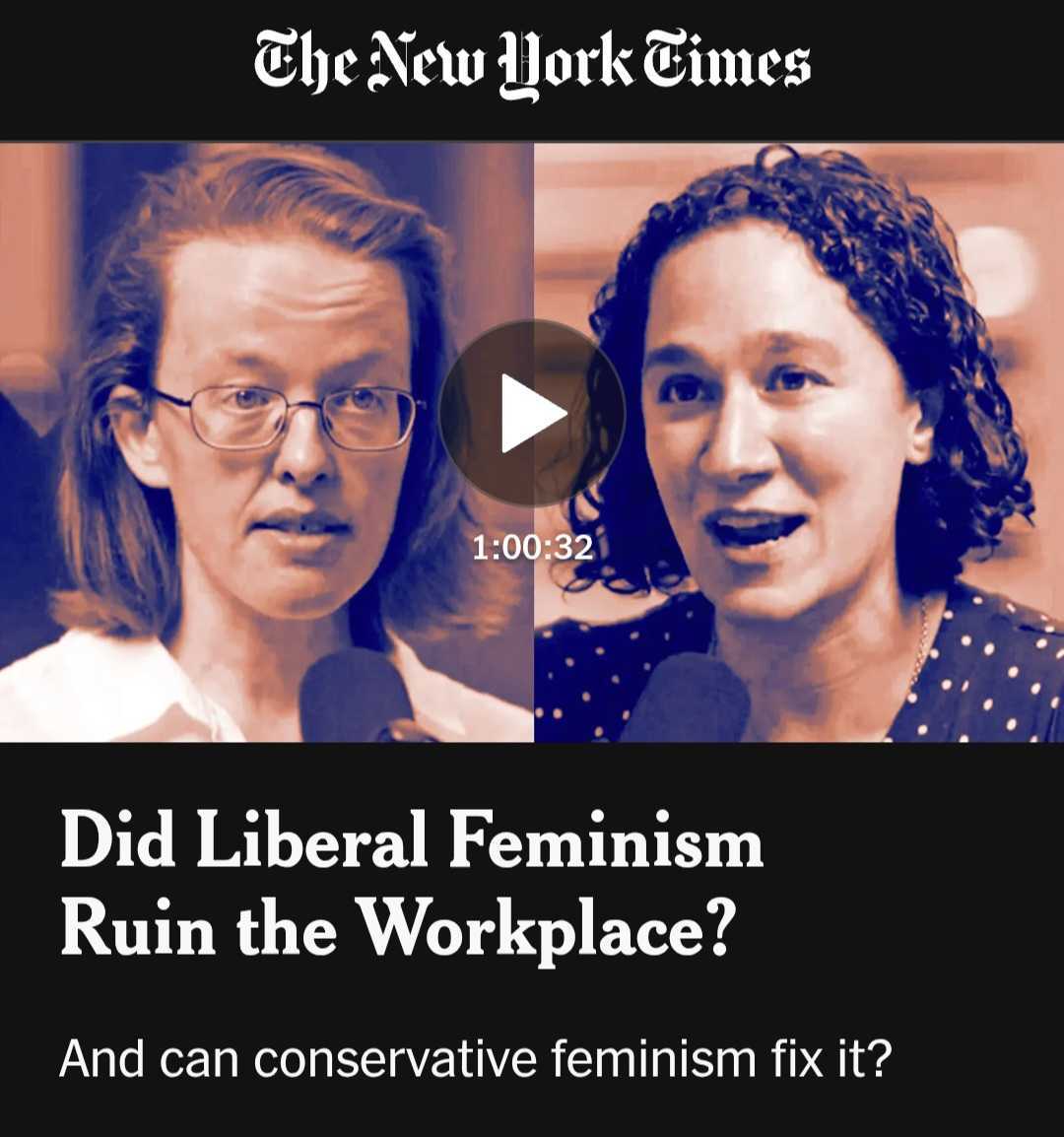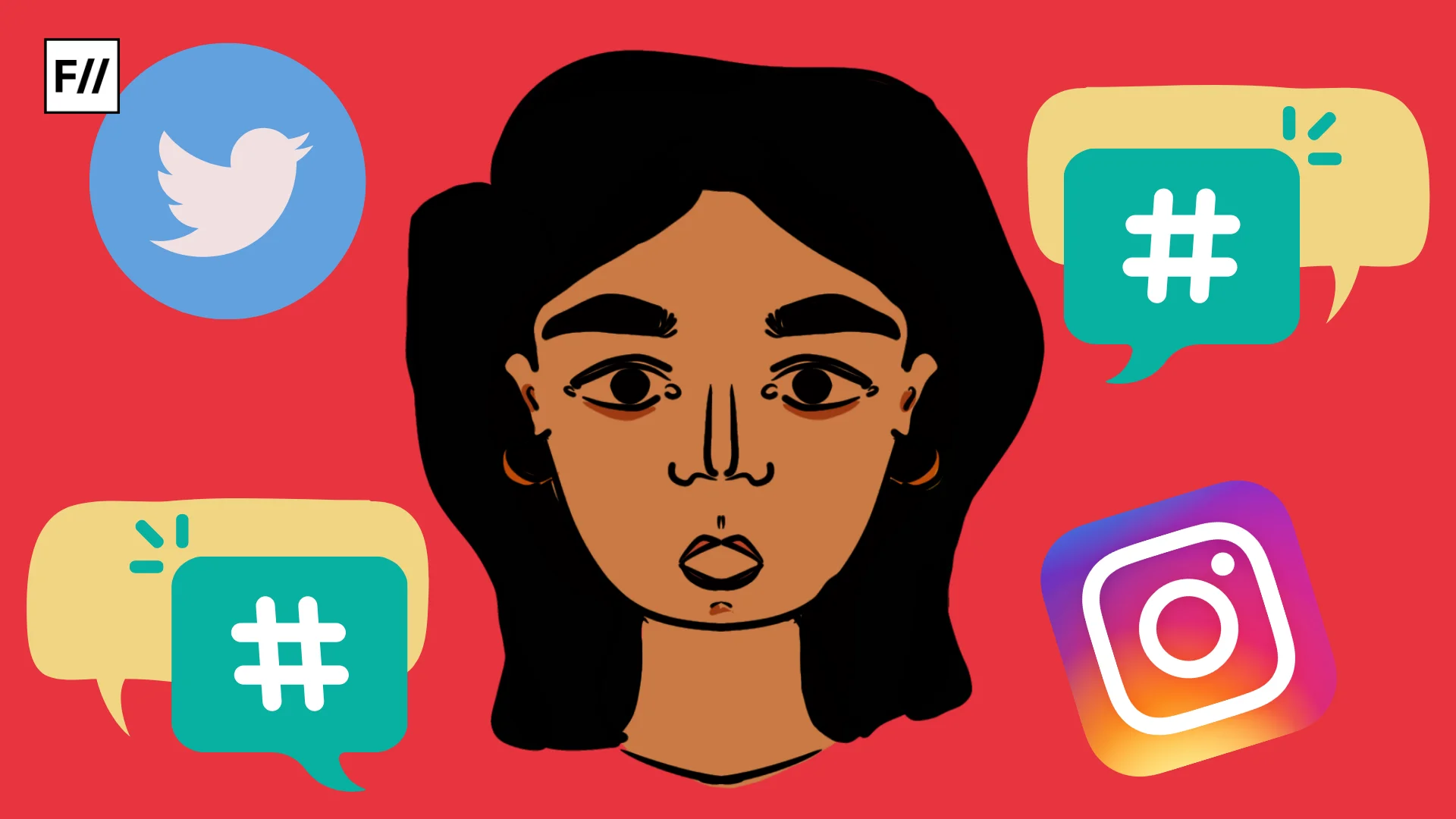“I don’t think we ask enough of our fathers.”
– Merlin Heintzman Hope
During my exchange semester at Montreal’s Concordia University, I happened to hear about the work of a young and upcoming artist and father Mr Merlin Heintzman Hope. His collaborative art piece with his then 18-month-old son Gael was an interesting exploration of his idea of paternity, his relationship with his son and reenvisioning fatherhood in and through his art. In our conversation, his Chinese Canadian background further brings out a common colonial thread in our understanding of paternity and fatherhood. And his groundbreaking work sets it to relief in the busy contemporary world where new age parents are forced to make a tough choice between career and parenting.
Also read: When Will Fatherhood Include Domestic & Childcare Responsibilities?
Arrangements are a series of collaborative art works by Merlin and Gael. Today I sit down with the artist in his twenties to chat about his work and fatherhood.
Ganesh Dileep: What was the idea behind this project?

Merlin Heintzman Hope: Young working parents often find themselves at a crossroads vis-a-vis their career and their children. Wait till their kids grow up or figure out how to integrate it or make that choice between career and kids. I think that what I was trying to do with this project was a holistic approach to art-making (my profession) where you combine your life and its aspects and see what comes of it.
I chose still life as a format. But I try to do it with my toddler at the same time and do a project that is both childcare and high art. Those don’t really fit together and figuring out how to reconcile that difference is my project. I think of them as intimate performances – where we (Gael and I) have to negotiate boundaries and step into a space that is non-hierarchical so that we can think of our relationship differently.
I think of them as intimate performances – where we (Gael and I) have to negotiate boundaries and step into a space that is non-hierarchical so that we can think of our relationship differently.
I learned how to be a parent by osmosis – based on how I was raised and the culture around me. It is the sort of cultural baggage you act on without thinking. This project was a way to try to question that education and to figure these boundaries out on my own.
Ganesh Dileep: What is it that inspired you to come up with the idea?
Merlin Heintzman Hope: The situation for the works came out of necessity. I had signed up for college and I did not have anyone to take care of the kid. I couldn’t take him to class because he is a very physical kid – doesn’t talk much but doesn’t stay still. So during class hours we would go to “Critique rooms” (which could be booked) and work there. Working there privately became an opportunity to make a project that was about us being locked in a room where we didn’t have to deal with the social pressure of how to behave. No one was telling me how to be a father and no one was telling him how not to act, and we were operating without that judgement.
It is incredible how little time we spend outside of social gaze.
It was an exciting opportunity. We could try to figure out how to establish a relationship outside of social expectation.
Ganesh Dileep: How is like a regular day at work with the toddler like?
Merlin Heintzman Hope: I would set up with a little bit of difficulty. Sometimes he would be breastfed before I pick him up, so I would get the still life arranged. Otherwise, I would have him in one arm and would be taking him up and down. I would have a packed lunch there in case he wanted to eat. The arrangement would be mostly toys and other objects that are tempting for him to play with. It is not interesting if he has nothing to interact with.
I would also have some additional toys. Him being able to pass the time with me was important. I didn’t want to force him to interact with the still life or the work, but rather make it a place where we could be together and I could express my will to try to draw the piece and he could express his will and his needs – like I want to play, or draw with charcoal, or move around, etc. Sometimes I’d be drawing, and sometimes he’d have my full attention. Sometimes we would be struggling because he would be sitting exactly at the spot I’d be drawing. Sometimes I’d get anxious so we’d walk around in the halls to take a break.
Sometimes you think that being a parent is sacrificing your needs to take care of your child’s needs. But if you are not taking care of yourself, you are not at your best to take care of someone else. Being a modern parent is oftentimes falling into the trap of what people think what parenthood should be, which I don’t think is very healthy for any parent. So figuring out how to be a collaborator or an equal was a big goal.
I made five works in total. It was very frustrating. But two of them are sort of are finished products worth keeping and looking. As for the other ones – the product is evidence of the performance.
Ganesh Dileep: Does he also interact with the art?
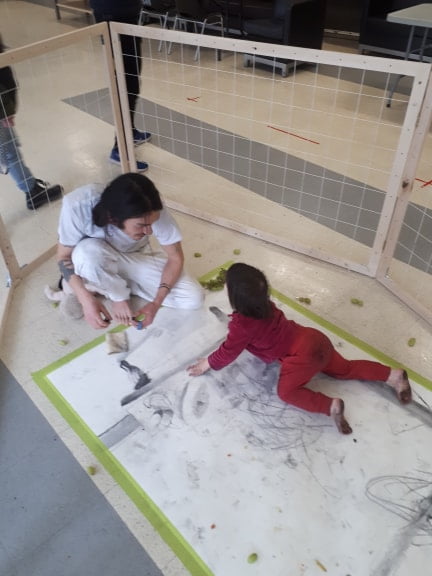
Merlin Heintzman Hope: It depended on the materials. We did some with pastel. He was interested in using pastel since it was bold and bright. I, however, really liked the charcoal drawings. Charcoal is not just about drawing or not drawing – you can just smudge it wiping your hand on it. The charcoal drawings are quite big – 3.5ft by 5ft. It was kept on the floor and so he could come by and erase everything. He didn’t have to draw, he could also make a gesture instead.
He could step on it, spill food on it, throw himself across it – and he has, plenty of times.
He was also interested in ripping the paper sometimes, which was really stressful. I had to figure out how comfortable I was with it and it turns out I wasn’t. So a lot of the drawings are heavily duct-taped on the back.
He was indeed interested in drawing a bit but I think since very little of what he does is sit down focus and draw, charcoal could capture the dynamicity of how he would really interact with the project – ripping, smudging, crawling, walking over it. On a more metaphorical level, it was also breaking the linear idea of progress – that an image is developed and created unless it is done, as opposed to it being a process.

Ganesh Dileep: How old is he?
Merlin Heintzman Hope: He is 26 months now. He was 18-20 months when we were working on these. He was walking and running and jumping by that age too.
Ganesh Dileep: How has your background with your parents worked into your relationship with your child as a father?
Merlin Heintzman Hope: Why I wanted to do this work in relation to fatherhood and my experience with it is because of my own childhood. I was allowed to explore and play but the boundaries were pretty unclear.
My father and my stepfather have anger issues and when you pass a line that you didn’t know was there, you are getting screamed at. The mutuality of figuring out the boundaries together didn’t exist, there was no sort of two-way accountability.
Also, I think that for many people, they have to learn for themselves that their parents are fallible too. A great opportunity is, thus, missed where you can encourage your children to teach you. The opportunity to grow with them. That is a really big goal for me – to try to be open to feedback, be transparent, apologise if I mess up.

Ganesh Dileep: What were your experiences with fatherhood? What was the kind of pressures, social and cultural you had to deal with?
Merlin Heintzman Hope: No one is asking me to do more than I already do. Doing simple tasks like changing his diapers, or reading your kid a story is seen as something amazing when it is the father doing it. On a personal level, I felt a lot of pressure from my partner. We work as a team, and hold each other to high standards. it is important to have that kind of accountability, and I’m grateful for it. Especially when not many others empower me to do better. When you are a man and you have done even a little bit of childcare and everyone says that is awesome, you tend to sometimes think that yeah, I am awesome.
If I’m doing half the work, people are congratulating me and if she’s doing half the work they are asking her why aren’t you doing enough.
We can’t have an equal relationship as parents and so we hope to have an equitable relationship because what we offer to the child as father and mother is different. There is also an aspirational idea of what type of parent you want to be and there is that internal pressure to conform to that aspirational idea. But that is as far as pressure goes. I do, however, feel like there is pressure to parent less. When I am out in public people will often imply that I am being careless or that Gael wants or needs his mother in particular situations. It’s weird for a lot of people to see a man take care of a child’s mundane needs.
Also read: How Harmful Is Patriarchy To Men And Boys?
Ganesh Dileep: What is your aspirational idea of a good father?
Merlin Heintzman Hope: People expect you to do more or to do less based on your gender. You try to “rise” to an aspirational role model. I look to women as good father role models because I can’t “rise” to a traditional father role model since there is very little to rise to. I don’t think we ask enough of our fathers. And I think that is why many of us have such fraught relationships with them. Even though society demands very less, it is seen as manly to do lesser.
I look to women as good father role models because I can’t “rise” to a Traditional father role model since there is very little to rise to.
If you step into the role of being a father, whenever you are not thinking about it you are playing the role of the father you are taught to be. And not all of those traits are bad – so many of them are positive. I think it is not as simple as to say that I am trying it on or I’m challenging it. It is more like I’m challenging the steps that led to it. Some of them fit, some of them don’t. Being critical of the role that you are playing, while playing it, it more important than having a reactionary stance. Because otherwise you wind up embodying something that has just as many challenges, and just as many negative qualities, except you are not aware of it since you are placing yourself in opposition to something than trying to redefine it. You wind up living like a parallel of what you are rejecting anyway.
A rejection of culture is losing a sense of self as well, so modernity doesn’t have to be a rejection of the past. I try to embody and adapt it to my current life and the values of my partner.
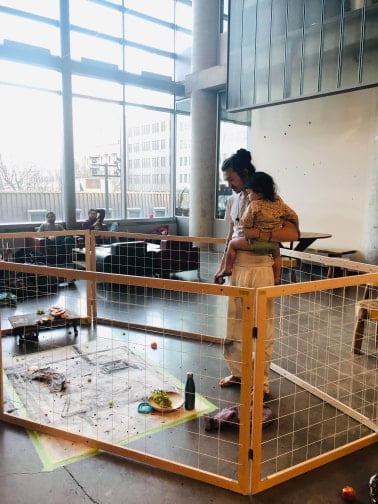
Also read: Why Caregiving Needs To Move Beyond The Boundaries Of Gender
FII thanks Merlin for taking time out to do the interview.
Merlin currently does intimate performance pieces where he works with his son on “Arrangements”. The pictures are from his public performances. More of his art can be found on his Tumblr page.
About the author(s)
A self-proclaimed travel addict and chef extraordinaire, Ganesh can be found in desolate corners of the library reading poetry when he's not in his natural habitat : under stage lights. He's pursuing his Integrated Masters in English Studies at IIT Madras.
